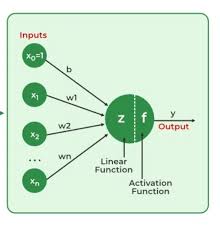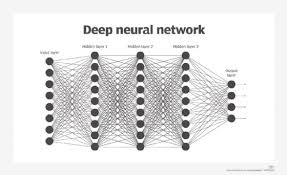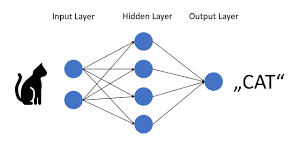Understanding Neural Networks for Beginners
Neural networks are a fundamental concept in the field of artificial intelligence and machine learning. They are computational models inspired by the way the human brain works, designed to recognize patterns and make decisions based on data. Although neural networks may seem complex at first, they can be broken down into simpler components for beginners to grasp.
What is a Neural Network?
A neural network is a collection of interconnected nodes, called neurons, organized in layers. These layers include an input layer, one or more hidden layers, and an output layer. Each neuron receives input data, processes it using weights and biases, and produces an output signal that is passed on to the next layer.
How Do Neural Networks Learn?
Neural networks learn by adjusting their weights and biases during a process known as training. This training involves feeding the network with labeled data, comparing its predictions with the actual outputs, and updating the parameters to minimize errors. Through repeated iterations of this process, the network improves its ability to make accurate predictions.
Types of Neural Networks
There are several types of neural networks used for various tasks:
- Feedforward Neural Networks: The simplest form of neural network where information flows in one direction from input to output.
- Recurrent Neural Networks (RNNs): Designed to handle sequential data by incorporating feedback loops.
- Convolutional Neural Networks (CNNs): Specialized for processing grid-like data such as images through convolutional layers.
- Generative Adversarial Networks (GANs): Comprising two networks that compete against each other to generate realistic outputs.
Applications of Neural Networks
Neural networks have found applications in various fields, including:
- Natural Language Processing: For tasks like language translation and sentiment analysis.
- Computer Vision: In image recognition, object detection, and facial recognition systems.
- Autonomous Vehicles: To interpret sensory inputs and make driving decisions in real-time.
- Healthcare: For diagnosing diseases from medical images or predicting patient outcomes.
In Conclusion
In conclusion, neural networks are powerful tools that enable machines to learn from data and perform complex tasks. By understanding the basic principles behind neural networks and their applications, beginners can appreciate their significance in shaping the future of artificial intelligence and machine learning.
Neural Networks for Beginners: FAQs on How They Work, Learning Ease, and Getting Started
- How neural network works step by step?
- Is neural network easy to learn?
- What is a neural network for beginners?
- How do I start studying neural networks?
How neural network works step by step?
One frequently asked question by beginners in the field of neural networks is: “How does a neural network work step by step?” To understand this process, it is essential to break it down into simpler components. Initially, input data is fed into the neural network through the input layer. The data is then processed through multiple hidden layers, where each neuron performs computations using weights and biases. These computations result in an output signal that is passed on to the subsequent layers. Through a process called training, the network learns to adjust its parameters by comparing its predictions with the actual outputs and minimizing errors iteratively. This iterative learning process enables the neural network to make increasingly accurate predictions over time.
Is neural network easy to learn?
The question of whether neural networks are easy to learn is a common one among beginners in the field of artificial intelligence and machine learning. While neural networks may seem complex and intimidating at first, with their interconnected nodes and layers, the concept can be grasped with patience and dedication. Like any new skill or technology, understanding neural networks requires time and practice. By breaking down the components of neural networks into simpler concepts, following tutorials, and experimenting with hands-on projects, beginners can gradually build their knowledge and confidence in working with neural networks. Ultimately, while mastering neural networks may present challenges, the rewards of being able to harness their power for various applications make the learning journey worthwhile.
What is a neural network for beginners?
For beginners, a neural network can be best understood as a computational model inspired by the human brain’s structure and function. It consists of interconnected nodes, or neurons, organized in layers that process input data to produce meaningful outputs. Through a process of learning and adjustment of weights and biases, neural networks can recognize patterns, make decisions, and perform tasks based on the data they are trained on. Essentially, a neural network serves as a powerful tool in artificial intelligence and machine learning, enabling machines to mimic human cognitive processes and achieve remarkable feats in various fields such as image recognition, natural language processing, and autonomous driving.
How do I start studying neural networks?
To start studying neural networks as a beginner, it is recommended to begin with a solid foundation in basic concepts of machine learning and artificial intelligence. Familiarize yourself with key terms such as neurons, layers, activation functions, and training algorithms. Next, explore introductory resources such as online courses, tutorials, and books that provide step-by-step explanations and hands-on exercises to build your understanding. Practice implementing simple neural network models using popular frameworks like TensorFlow or PyTorch to gain practical experience. Additionally, joining online communities or forums dedicated to machine learning can help you connect with experts and fellow learners for guidance and support as you embark on your neural network learning journey.



